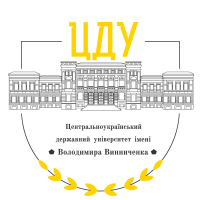SLOGANS IN THE TEXTS OF EDUCATIONAL ADVERTISING: SPECIFICITY OF STRUTUR ORGANIZATION
DOI:
https://doi.org/10.32782/2522-4077-2024-208-59Keywords:
advertising, educational advertising, educational services, advertising text, slogan, syntax, phrases, types of sentencesAbstract
Educational advertising is a poorly researched scientific area in the linguistic aspect. The specific object of advertising is educational activity, requiring from all verbal components of the advertising text a balance between rationality and emotionality, high quality, completeness and accuracy of information. The article studies an important structural element of the logo system of advertising texts for educational services – a slogan. The essence of slogans as advertising constants is defined, which in a concentrated way reflect the content of an advertising message, concentrate shock meanings in themselves, and declare the main ideas of the proposed training centers. Signs of slogans are generalized, such as: brevity, memorability, practicality, uniqueness, dynamism, simplicity, positivity, expressiveness, motivation, and persuasiveness. The functional load of slogans is that, to one degree or another, they repeat the main advertising argument and give the advertising text completeness. The validity of the content and form of slogans in the advertisements of the educational sphere (more than 100) is evidenced by the results of the analysis of the features of their structural organization. Note that ad texts have a repeating model that includes information about the subject, audience, action as an object of advertising, and the result of this action. The meaning of the slogan is often «tied» to one of the elements, this also affects the form of presentation of information. The conclusions of linguists about the tendency to minimize the volume of slogans are confirmed; the average indicator of the number of words in the study materials is six language units. Condensed content and speechexpression means determine the ease of memorizing the slogan, contributes to this and rhythmization of the structure through repetitions of words. The minimum syntactic units in the role of slogans are substantive phrases; the longest are simply complicated, or complex sentences. The most typical syntactic constructions of slogans were revealed: 1) simple sentences with the scheme A = B, where one part is the proper name of the training center, and the other part in terms of content creates its nominative image descriptive image, gives it an estimated characteristic, emphasizes the quality of the object of advertising; 2) incomplete sentences, where the content emphasis is most often transferred to the circumstances of the action and at the same time the manipulative influence on the consumer is enhanced; 3) monosyllabic sentences, especially denoted-personal, which are subordinate to the strategy of intimation and perform a voluntarism function – induce action, call for participation; 4) complex sentences in which the weight of figurative means increases: metaphors, stable expressions, periphrases, language game. Methods of expressive syntax are witnessed: repetitions of words, opposition. It is noted that most advertising slogans (about 70%) are pronounced with an increased exclamation intonation, regardless of the syntactic structure. Interrogative and exclamation sentences create dialogical structures "question-answer" in order to implement advertising tactics "communication with the client." Slogans of educational advertising texts are rich material for research; their semantic capacity and pragmatic saturation, successfully embodied in a structurally small format, requires even deeper scientific research.
References
Арешенкова О. А. Комунікативно-прагматичні та стилістичні параметри рекламного тексту: монографія. Кривий Ріг: ФОП Маринченко С.В. 2018. 176 с.
Великий тлумачний словник сучасної української мови. / уклад. і голов. ред. В. Бусел. Київ ; Ірпінь : ВТФ «Перун», VIII. 2005. 1728 с.
Віговська Л. А. Слоган як один з видів рекламного тексту. Закарпатські філологічні студії. 2020. Вип. 14. Т. 1. С. 281–285.
Добровольська Д. М. Полікодовість соціальної реклами: перекладацький аспект. Одеський лінгвістичний вісник: наук.-практ. журнал, 2015. Спец. вип. С. 101–107. URL: http://www.oljournal.in.ua/v5/15.pdf
Дядечко Л. А. Рекламний слоган: прагматичний і соціофункціональний аспекти. Вісник Черкаського університету. Серія Філологічні науки. 2009. № 169. С. 53–59.
Зелінська О. І. Синтаксичні особливості українського рекламного тексту. Науковий вісник Міжнародного гуманітарного університету. Сер.: Філологія. 2017. № 27, Т. 1. С. 11–13.
Зірка В. В. Мовна парадигма маніпулятивної гри в рекламі: автореф. дис. на здобуття наук. ступеня док. філол. наук: спец. 10.02.02 / НАНУ Ін-т мовознавства. Київ. 2005. 32 с.
Іванова І. Б. Дискурс, текст, стиль: модель лінгвістичного дослідження реклами. Наукові записки Бердянського державного педагогічного університету. Сер.: Філологічні науки. 2015. Вип. 5. С. 33–40.
Ковалевська А. В. Структурна класифікація слоганів політичної реклами. Наукові записки Національного університету Острозька академія. Серія: Філологічна. 2014. Вип. 44. С. 124–126.
Коваленко Н. Л. Лінгвістична позначеність слогана в структурі рекламного тексту: автореф. дис. на здобуття наук. ступеня канд. філол. наук: спец. 10.02.02 «Російська мова». 2006. Дніпропетровськ. 19 с.
Куньч З., Василишин І. Античні афоризми як матриці культурно-інтелектуальної, психоментальної та історіософської інтенції студентського соціуму (девізи університетів світу). Wrocławska ukrainistyka. Lingua. Litterae. Sermo. Wrocław. 2022. S. 167–179.
Кутуза Н. В. Слоган як сугестивний концентр реклами. Рекламний та PR-дискурс: аспекти впливу: зб. статей. Київ: Видавничий дім Дмитра Бураго, 2015. С. 133–137.
Малишенко А. О. Переклад слоганів в англомовному рекламному дискурсі. Вісник Харків. нац. ун-ту. № 973. 2011. С. 188–192.
М’яснянкіна Л. Синтаксична специфіка рекламного дискурсу. Вісник Львівського університету. Серія Журналістика. 2017. Вип. 42. С. 299–306.
Ребрій О. В. Прагматичний аспект перекладу рекламних текстів. Вісник Харків. нац. універ. імені В. Н. Каразіна. Харків, 2003. № 609. С. 41–45.
Цимбалюк Ю. В, Глущенко Г. Б. Латиномовні гасла академій та університетів. Держава та регіони. Сер.: Гуманітарні науки. 2012. Вип. 4. 48–66 с.








